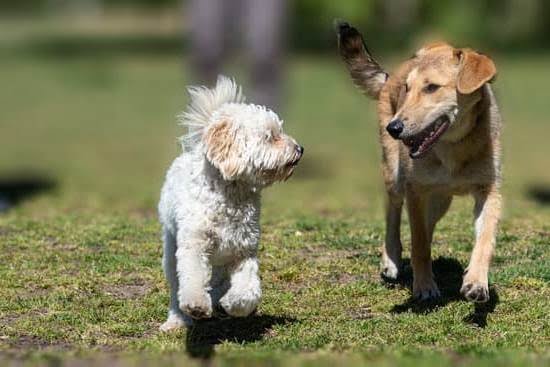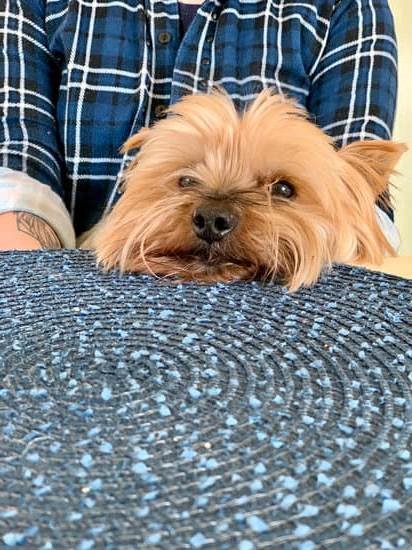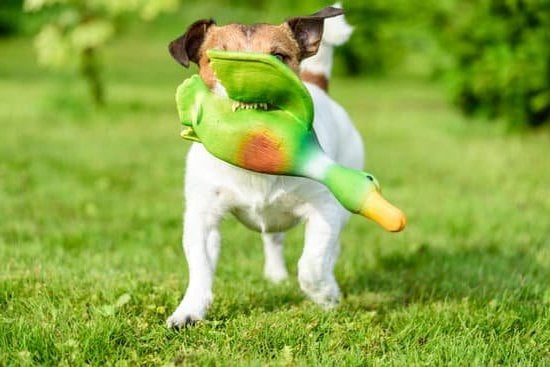Introduction
One of the benefits of training your dog to use a pee pad is that it helps to keep your home cleaner and tidier. This is especially true for owners who live in apartments, where it can be difficult to take a dog outside for frequent bathroom breaks. A pee pad provides a more convenient alternative and ensures that messes are confined to one area. Additionally, some dogs are not able to go outside when needed due to age, health issues, or other limitations. A pee pad can save the time and energy involved with having to get a dog outside every time they need to go. Training your puppy or adult dog on a pee pad can also help them learn bladder control, which makes housebreaking much easier. Furthermore, if you’re traveling with your pet out of town or staying in hotels, having them trained on the pee pad will provide added convenience by not requiring the full housebreaking process all over again.
Choosing the Right Pee Pad for Your Dog
When selecting a pee pad for your dog, it’s important to consider the materials of the pad, the size of the pad, the style and layout of the pad, as well as other factors.
To start, choose a material that is comfortable for your dog and easy to clean. Pee pads can be made from various materials such as natural fibers like cotton or synthetic components like polyester and foam. Some pads also come with chemical odor control or water-resistant features. Additionally, look for pee pads with multiple layers which typically make them less prone to leakage and faster drying time.
Next, it’s important to consider the size of the pee pad since larger dogs require more space than smaller pets. Generally speaking, you should use pads at least 25 per cent larger than your pet’s body length. Additionally, if you have more than one pup in your household you might want to opt for a patchwork design which will make it easier to designate area boundaries while keeping everyone comfortable on a single sheet or carpet when needed.
Finally, check out any special features offered in different brands and styles of pee pads such as scented options for attracting pets or adhesive features for sticking firmly onto hardwood floors. These options are available in both disposable and reusable designs so take some time researching these factors before settling on one product line.
Preparing the Setup for Pee Pad Training
When setting up your pet’s indoor potty area, it is important to consider the location, environment and any necessary improvements. Firstly, choose an appropriate location in the house that is convenient for both you and your pet. A quiet corner of a laundry room or spare bedroom can be ideal. Secondly, think about how you will set up the environment. Will there simply be the pee pad in an open area or will some kind of distraction (e.g., a bed) be added to encourage your pet to stay put? Make sure that whatever improvements you decide to make are comfortable for your pet and do not interfere with their ability to utilize the pee pad. Finally, if possible, try to simulate as much of an outdoor potty experience as possible by putting out different objects (e.g., toys) that your dog can interact with while using the pee pad. Once all necessary considerations have been made, it’s time to launch into training mode!
Introducing Your Dog to their New Pee Pad
The first step in training your pup to use the pee pad is to introduce them to it. Start by placing a few treats (or special rewards) around the pad and allow your pup to discover it on their own. Be sure to encourage them with plenty of warm praise and verbal cues. Once they’ve discovered the treats, help them make the connection between successfully going potty on their pee pad and receiving a reward. While doing this, try saying “potty” or “Pee Pad” as an additional reminder for your pup for where it’s acceptable for them to go. If there’s any accidents away from their designated potty spot during this phase, simply point out where they should have gone and continue rewarding successful attempts!
Exercises for Training Your Dog to Use the Pee Pad
To start, get your dog familiar with the pee pad so it is a comfortable and preferable place to potty. Place the pee pad in an area of the home you want your dog to use as their designated potty space. With some treats or toys, encourage your pup to investigate the pee pad and get comfortable with it in the room. Make sure your dog knows that it is a safe place for them to go without feeling scared or intimidated.
Once your dog is comfortable and familiar with the setup, it’s time to determine a set potty time routine. Scheduling different times throughout the day that you take your pup out to use the designated pee pad will help in reinforcing consistency; consider setting aside 15 minutes each morning, after meals, and after playtime or during other activities they enjoy. While they are using the pee pad, be prepared with verbal praise and treats! Depending on how quickly and easily they catch on, you can increase or decrease rewards accordingly – stopping rewards altogether when they no longer need encouragement.
You can also intermittently test their skill by having them wait longer periods between, as well as by setting up different scenarios such as taking them outside to watch other dogs use an outdoor bathroom spot before returning inside for their own attempt at going on their pee pad. This makes your pup more aware that all seasonal outings do not mean surefire outdoor potty spots; with continued reinforcement from treats or toys combined with verbal praise, this exercise should eventually result in success in training them to use the pee pad reliably.
Ensuring Your Dog Follows the Rules and Consistently Uses the Pad
When it comes to ensuring that your dog follows the rules and consistently uses the pee pad, consistency and routines are key. Start by having one specific spot in your home designated for pottying such as a kitchen or living room corner. Place the pee pad there and encourage your pup to use it when you notice signs they need to go (sniffing around, pacing, etc). After they’ve finished going, be sure to reward them with a treat or praise so that they associate going on the pad with positive reinforcement. From there, ensure that you’re taking them out immediately after every meal to ensure regularity. Additionally, establish a schedule for potty breaks throughout the day so your pup can learn when it is time for bathroom breaks. Finally, reduce access to places beyond where their pads are located by blocking off their wanderings should they stray from this area.
Troubleshooting Tips for If Things Don’t Go According to Plan
If you are having trouble training your dog on a pee pad, there can be a few different causes.
Firstly, it may be that your pup’s needs aren’t being met with the behaviour you are expecting from them. Make sure that when you reward good behaviour, it’s something that makes them feel rewarded such as playtime or treats. This will encourage them to continue to behave in the desired manner.
Another reason could be that the puppy isn’t used to the texture of the pee pad yet. To get them more comfortable, try washing and using a new one every few days, so they become accustomed to its texture with minimal frustration. Remember, if they don’t like it right away, give them time to adjust and look happier after a few uses.
Sometimes pups don’t go on the pee pad because they are distracted by too much noise or movement (like people walking by). If this is the case, make sure to create a quiet place where they can focus solely on the activity at hand – using their pee pad. You can also try blocking off any potential distractions such as curtains or pieces of furniture so nothing gets in their way while they’re trying to use their pee pad!
Finally, puppies may have an issue if lapses occur in consistency. They learn best when routines remain consistent and unchanged. As long as potty training is taking place at approximately the same time every day (preferably in short intervals) and the same cue words are used each time your pup goes to pee on the pad, there should be minimal issues with consistency.
The Benefits of Investing Time in Dog Pee Pad Training
Training a dog on a pee pad can have several quality of life benefits. For instance, it can save owners the time and energy associated with having to take their dog outside constantly to do their business. In addition, inclement weather that may be too harsh for your pup to wander in is no longer a problem when they are trained to use pads indoors. The pads also provide an opportunity to give puppies greater independence while still upholding housebreaking rules.
When training a dog on pee pads there are several reward-based techniques that can help ensure success. Positive reinforcement is one of the best ways to train your pup and make sure they understand what behavior is expected from them. Using words such as “yes” or “good” when your pup does something correctly and giving them treats for successful potty breaks will go a long way. Additionally, you should place absorbent pads near where the dog usually rests or eats so that they recognize it as an area specifically meant for pottying. If an accident does happen, be sure not to scold but instead gently lead your pup back to the pad and continue reinforcing correct behavior if necessary. With consistent reinforcement, patience, and understanding your pooch will soon catch on and gain greater confidence in their skills!
Conclusion
Once you have reinforced the desired behavior of your pup on the pee pad, it will be time to transition away from it completely if desired. Generally, a puppy should be able to entirely transition anywhere between six weeks and three months old depending on breed and development. To begin this process, start by taking your pup outside more regularly and encouraging them to go there instead of using the pee pad. This can be done by bringing treats or toys with you and reinforcing the behavior after they urinate outside. Do not punish the pup for having an accident, as it can create anxiety around going to the restroom ensuring any progress that has been made will not last.
Once your pup has had enough successful trips outside, begin transitioning away from using a pee pad all together. Start by slowly reducing the number of pads being used each day for a few weeks until there are no more being used whatsoever. Finally, consider creating an outdoor potty area where accidents are likely to happen and keeping it clean so that your pup associates relieving themselves with the smell of fresh grass or soil rather than carpet or concrete indoors. It’s important to remember that all changes should be done gradually; trying to jump over stages will most likely only confuse your pup causing them to regress in their training or simply ignore commands altogether. After lasting success at training a dog on a pee pad is attained, use reinforcement techniques such as verbal praise, petting them behind their ears, treats or toys as rewards so that he remains positive about going outdoors making sure positive associations remain reinforced even after complete transition off the pads!

Welcome to the blog! I am a professional dog trainer and have been working with dogs for many years. In this blog, I will be discussing various topics related to dog training, including tips, tricks, and advice. I hope you find this information helpful and informative. Thanks for reading!





